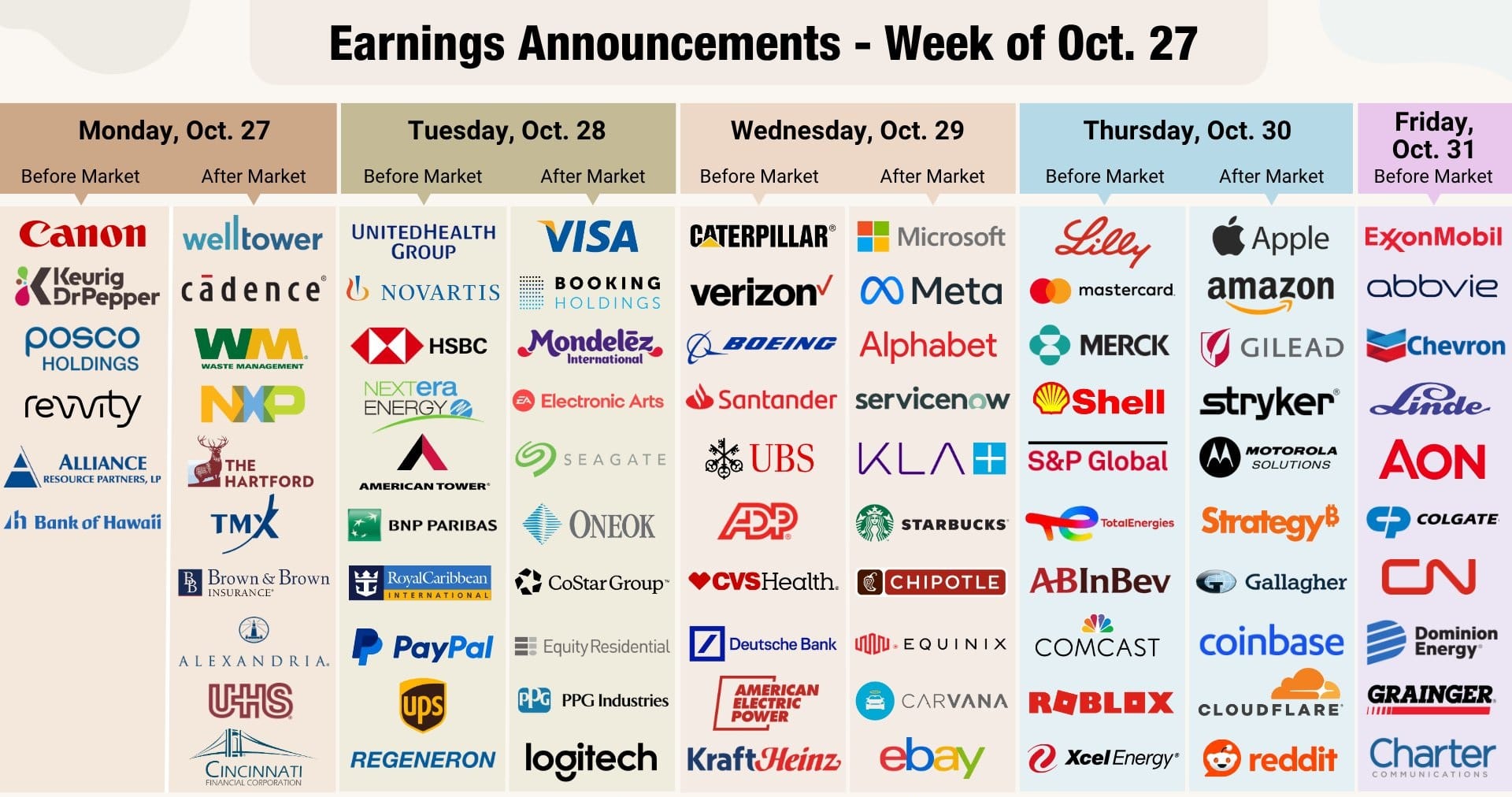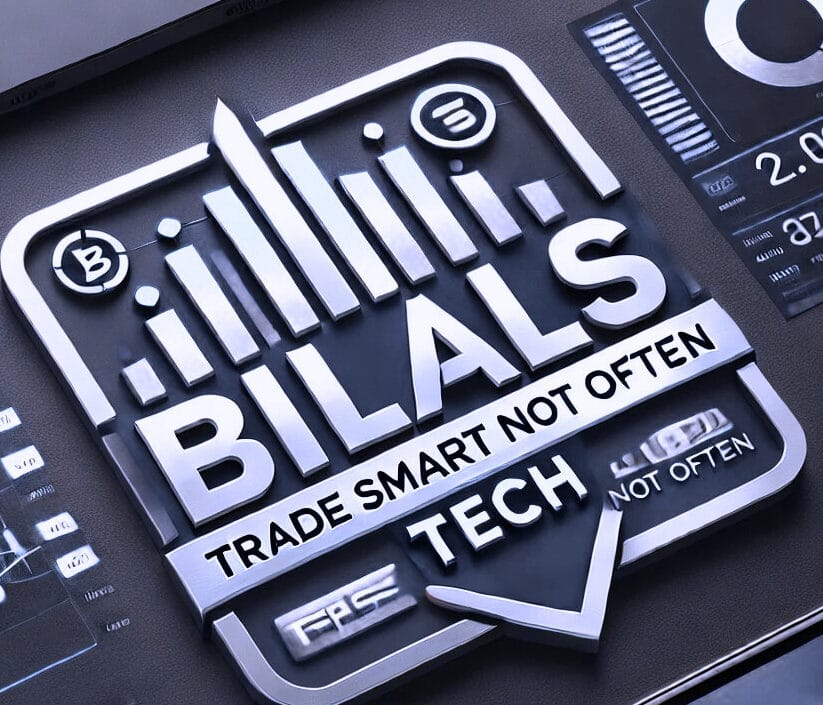North America News
US Stock Indices Log Best Weekly Gains of 2024, Led by Tech Surge
Major US equity indices wrapped up their best weekly performance of the year on Friday, buoyed by optimism around a temporary pause in new trade tariffs and relief from recent economic data.
Here’s how the indices performed on the day:
- Dow Jones Industrial Average: +619.05 points (+1.56%) to close at 40,212.71
- S&P 500: +95.31 points (+1.81%) to close at 5,363.36
- NASDAQ Composite: +337.14 points (+2.06%) to finish at 16,724.45
- Russell 2000: +28.80 points (+1.57%) to end at 1,860.20
For the week, the performance was even more impressive:
- Dow Jones: +4.95%, its strongest week since October 30, 2023, when it rose 5.07%
- S&P 500: +5.7%, also the best weekly gain since the October 30 rally of 5.85%
- NASDAQ Composite: +7.29%, its most significant weekly gain since the 8.10% jump on November 7, 2022
- Russell 2000: +1.82%, marking its best week since January 13, 2025, when it rose 3.95%
The rally comes as markets find relief in signs of a softer tone from the White House regarding trade policy, especially with regard to tariff escalation. Tech stocks led the charge, while small caps and industrials also participated.
Market sentiment improved following the announcement of a 90-day pause on new tariffs (excluding those targeting China), which gave investors hope for a more measured approach to international trade going forward.
US Consumer Sentiment Drops Sharply in April to 50.8, Lowest Since Early Pandemic
The preliminary University of Michigan consumer sentiment index for April 2025 fell sharply to 50.8, well below the 54.5 consensus estimate and down from 57.9 in March.

Breakdown of the data:
- Current conditions index: 56.5 vs 61.5 expected.
- Expectations index: 47.2 vs 50.8 expected — the lowest level since the depths of the COVID-19 pandemic.
Inflation expectations also jumped:
- 1-year inflation outlook surged to 6.7%, up from 4.9% in March.
- 5-year inflation outlook rose to 4.4%, the highest level since 1991, up from 3.9%.

The University noted that the drop in sentiment was broad-based, cutting across all demographics — age, income, education level, geographic location, and political alignment.
US March PPI Rises 2.7% Year-Over-Year, Below Forecasts
The US Producer Price Index (PPI) increased by 2.7% annually in March 2025, falling short of the 3.3% estimate. February’s figure was 3.2%.
- PPI month-over-month declined 0.4%, well below the expected +0.2%.
- Core PPI (excluding food and energy) rose 3.3% y/y vs 3.6% forecast.
- Core PPI m/m came in at -0.1%, missing expectations of +0.3%.
- PPI excluding food, energy, and trade was +3.4% y/y, slightly lower than the +3.5% prior reading.
- PPI ex food/energy/trade m/m grew by just +0.1%, versus +0.4% previously.
Driving the weaker PPI:
- Energy prices fell by 4.0%.
- Food prices declined by 2.1%.
- Gasoline prices dropped 11.1%, making up two-thirds of the goods price drop.
This data suggests easing pipeline inflation pressures, with energy and food playing a significant role.


Trump Tells CEOs a Shift in Tariff Policy Is Underway
According to a Fox Business report by Charlie Gasparino, corporate executives in regular communication with the Trump administration say the President is open to revising his tariff strategy.
One CEO described Trump’s stance as an “open door policy,” noting that he’s actively listening to their concerns about the negative impact tariffs are having on both the economy and financial markets. A major concern raised was that prolonged trade conflict could lead to stagflation and push the 10-year Treasury yield to 5%, bringing a set of financial risks.
The White House has reportedly assured these executives that a pivot is already in motion. Trade deals are being worked out, and there remains significant room for negotiations with China. The administration appears to be recalibrating toward a more growth-oriented economic strategy. The situation is still evolving.
Trump Administration Warned China to Request Xi Call Before Latest Tariff Escalation
Hours before China revealed its latest round of retaliatory tariffs, senior US officials privately warned Beijing against doing so. According to CNN, the Trump administration also reiterated its request for Chinese President Xi Jinping to initiate a call with President Trump.
The US reportedly informed China that it would not be the one to reach out first. While Foreign Minister Wang Yi was previously proposed as a communication channel, the Trump administration rejected this and supplied alternative contact names — none of which China accepted.
Frustrated with the lack of leader-level dialogue, China is now rumored to be considering targeted disruptions to US multinationals operating in China, with companies like Apple, Tesla, Caterpillar, and Starbucks under review.
Fed’s Williams: Tariffs will boost inflation to between 3.5% to 4% this year
- Comments from the NY Fed President
- The economy started the year on a solid footing
- Sees unemployment rising to 4.5% to 5% this year
- Expects growth to slow to 1% this year
- Very important to keep inflation expectations anchored
- Modestly restrictive monetary policy is totally appropriate
- Tariffs are a huge driver of uncertainty
Fed’s Kashkari: Our job is to make sure inflation expectations don’t rise
- Fed’s Kashkari speaking to CNBC
- Our job is to make sure inflation expectations don’t rise.
- It’s a complicated thing to analyse.
- It’s hard to get a read of what’s happening underneath.
- We must ensure long-term inflation expectations don’t rise.
- I am not seeing evidence yet that long-run inflation expectations are rising.
- Investors may believe that if the trade deficit is going to come down, the US may not be as attractive an investment.
- There may be credibility to the story of investor preference shifting.
- I think we are quite a ways away from the market conditions we saw in the pandemic.
- We cannot determine where yields ultimately settle, we can only smooth the transition.
- There was a lot of good news under the hood in CPI.
- The effect of tariffs suggest inflation will be going back up again, our job is to ensure it doesn’t turn to long-term inflation.
- If we hadn’t had four years of high inflation, I’d be more comfortable taking a look-through approach.
- But with inflation still elevated, it makes me nervous about taking that one time look-through approach on tariffs effect on inflation.
- As I understand it, private credit funds are less leveraged than banks.
- Right now not seeing a systemic risk in private credit.
- It bears watching but not seeing fundamental kindling there.
- Tariffs put the Fed in tough position in pushing up inflation and slowing growth.
- The outlook depends a lot on how the tariffs negotiations go, how quickly they proceed.
- If they drag on, it may take more time to reach the needed level of comfort around inflation to lower rates.
- I think the Fed or Treasury stepping in should only be done reluctantly.
- Fed has tools to provide more liquidity.
US Corporate Bankruptcies Surge to 15-Year High in Early 2025
Large US companies are going bankrupt at a pace not seen since the aftermath of the 2008 crisis. S&P Global Market Intelligence reports that 188 major firms filed for bankruptcy in the first quarter of 2025 — the highest number for any Q1 since 2010, when 254 companies filed.
By comparison, Q1 2024 saw 139 bankruptcies among large corporations. The steep rise signals a tightening financial environment and growing strain on businesses amid trade turbulence and rising operational costs.
Tesla Rolls Out Lower-Cost ‘Long Range’ Cybertruck in the US at $69,990
Tesla has officially launched a new “Long Range” version of its Cybertruck lineup in the US, priced at $69,990. This version features reduced capabilities compared to earlier models.
The new truck is a Rear-Wheel Drive (RWD) model, equipped with a single motor. It’s designed to extend range but comes with less advanced suspension and fewer features overall. Previously, only the Dual Motor All-Wheel Drive (AWD) and the Tri-Motor AWD “Cyberbeast” models were available. With this launch, Tesla is targeting buyers looking for a more affordable option, sacrificing premium components to bring down the cost.
Fed’s Musalem: I expect growth this year to be lower than trend
- Not exactly and out-of-consensus call from the St Louis Fed President
- Tariffs if implemented pose upside risks to inflation but doesn’t know if that’s months, quarters or years
- Higher inflation and a softer labor market is closer to the baseline scenario now
- If inflation expectations become unanchored, have to prioritize fighting inflation
- Uncertainty on tariff announcements also a headwind
US Energy Secretary Wright: China Tariffs Signal Negotiation Phase
US Energy Secretary Chris Wright views the current tariff escalation with China as part of a broader negotiation effort led by President Trump.
Speaking to Bloomberg, Wright characterized the rising tariffs as Trump’s strategic approach, shaped by his business background and first presidential term. He expressed confidence that the process will lead to a favorable outcome, noting, “This is home territory for President Trump… he uses leverage, reads the marketplace, and engages.”
Wright remains optimistic about how the US will navigate the current phase of the trade war with China.
Five Below Pulls the Plug on China Shipments Amid Tariff Pressure
Discount retailer Five Below has halted all incoming shipments from China, asking its vendors to refuse loading any new cargo headed to the US.
A letter from A.P. Moller-Maersk, acting on behalf of Five Below, informed suppliers of the decision. The message didn’t clarify if the halt applied universally to all vendors or just certain suppliers. The move comes as the ripple effects of the US-China tariff escalation force US retailers to reassess their sourcing strategies on the fly.
ICYMI – Harley-Davidson board member resigns, cites ‘grave concerns’ about company
- Individual stock news
Info via Reuters.
A Harley-Davidson board member has resigned after raising serious concerns about the company’s direction, triggering an 11% drop in the stock on Thursday.
Jared Dourdeville, who represents Harley’s second-largest shareholder, H Partners, cited “cultural depletion” stemming from leadership departures and remote work policies in a letter to the board. He also called for the resignation of CEO Jochen Zeitz and two other directors.
Harley said Dourdeville quit ahead of a scheduled board meeting to address his concerns and after voting against the board’s decision not to appoint his preferred CEO candidate.
Earlier this week, Harley announced that Zeitz plans to retire in 2025, staying on until a successor is found. The company continues to face challenges attracting younger riders, and is now leaning on higher-margin Touring bikes and custom vehicle offerings to appeal to wealthier customers.
Fed’s Collins says interest rate policy to hold steady for now
- Federal Reserve Bank of Boston President Susan Collins:
- Rate policy well positioned, holding steady for now seems best
- Tariffs will drive up inflation, slow growth levels
- Tariffs could push core inflation ‘well above’ 3% this year
- Renewed price pressures could delay rate cuts
- Fed may yet find space to lower rates this year
- Fed policy choices difficult, beset by trade offs
- Monetary policy needs to be nimble in uncertain environment
- Must keep inflation expectations stable
- Sees upside inflation risks, downside growth risk
- Fed policy still positioned to lower inflation pressures
- Tighter financial conditions may restrain activity
- High uncertainty clouding economic outlook
- Expects inflation pressures to wane over longer run
- financial markets performing well
- financial markets continue to be liquid
- Federal Reserve credibility is critical to maintain stable prices
Commodities News
Gold Surges to All-Time High as US-China Tariff Fight Escalates, Dollar Plunges
Gold soared over 2% on Friday, climbing to a record high as investors rushed into safe-haven assets amid rising fears over the US-China trade war and persistent inflation risks. The price of gold hit a historic peak of $3,245.45, before retreating slightly to $3,233 by the time of writing.
The sharp rally extended the metal’s winning streak to a third straight day. Fueling the flight to safety was China’s announcement of a 125% tariff on US imports, a direct response to the US increasing its own tariffs on Chinese goods to 145%. The intensifying economic conflict drove a global risk-off sentiment.
At the same time, the US Dollar Index (DXY) plunged to 99.01, its lowest level since May 2022. The weakened dollar significantly boosted gold’s appeal, providing tailwind for the ongoing breakout.
Market participants also digested a mix of US economic data. Producer inflation cooled slightly, with March’s PPI rising 2.7% YoY, down from 3.2% in February and missing expectations of 3.3%. Core PPI (excluding food and energy) edged down to 3.3%, still holding above the Fed’s comfort zone.
Meanwhile, the University of Michigan’s Consumer Sentiment Index dropped from 57.0 to 50.8, reflecting deepening economic pessimism. Inflation expectations also shot higher:
- 1-year inflation forecast jumped from 5.0% to 6.7%
- 5-year outlook climbed from 4.1% to 4.4%, the highest level since 1991
Recession risks also drew attention, with several major financial institutions raising alarms:
- Wells Fargo and Morgan Stanley CEO Ted Pick acknowledged growing recession odds.
- JPMorgan CEO Jamie Dimon estimated a 50% chance of a US recession.
- Goldman Sachs revised its 12-month recession probability from 35% to 45%.
Despite mixed data, the Federal Reserve is now widely expected to remain on hold. Traders have fully priced in three rate cuts for 2025, betting the Fed will wait out the tariff storm.
Technical outlook:
Gold has now surged nearly 100% since its September 2022 low. For 2025 alone, the yellow metal is up approximately 23.46%. This week’s 6.35% gain marks the second-largest weekly rally since March 13, 2023.
On the daily chart, the price extended above a key upper trendline at $3,082 and bounced off the 50-day moving average, currently at $2,969.76. A sustained move above the 50-day MA has solidified bullish momentum. The breakout through $3,245.45 puts higher price zones in focus, although any drop back below the 50-day MA could shift sentiment toward the bears in the medium term.
Crude Oil Futures Settle at $61.50, Bounce After Steep Weekly Low
Crude oil futures closed at $61.50 per barrel on Friday, up $1.43 (+2.38%) for the day. Price action was volatile throughout the week:
- Daily high: $61.07
- Daily low: $59.46
- Weekly high: $63.87
- Weekly low: $55.15 — the lowest since February 2021
Despite Friday’s rebound, oil ended the week down $0.78 (-1.26%).
Technical chart analysis shows that earlier in the week, prices broke below a key support range between $60.45 and $63.64, reaching a bottom near $55.12. On Thursday, prices recovered but failed to breach the $63.64 resistance level, with the high stopping at $63.34.
Moving forward, bulls will need to clear and hold above $63.64 to confirm upward momentum. Until then, technical pressure remains to the downside.

Platinum and Palladium Slump on Tariff Fears, Forecasts Revised Lower
Commerzbank has revised its year-end price forecasts for platinum and palladium, citing tariff-driven volatility and declining demand from the auto industry.
- Platinum fell to $900 per troy ounce earlier this week — its lowest level in nearly a year.
- Palladium dipped to $890, an 8-month low.
Earlier in the month, both metals were trading near $1,000 per ounce. The partial suspension of tariffs gave prices a temporary lift, but Commerzbank warns that uncertainty around US tariff policy, especially on auto imports, is dampening demand.
- Year-end forecast for platinum is now $1,000/oz (down from $1,100).
- Year-end forecast for palladium is now $1,000/oz (down from $1,150).
The bank emphasized that a 25% US tariff on vehicles took effect in early April, with an additional 25% tariff on car parts set to kick in this May, further clouding the outlook.
North American Rig Counts Decline Again: US -7, Canada -15
The latest Baker Hughes data shows a continued contraction in North American drilling activity:
United States:
- Total rigs: 583 (down 7 from last week)
- Oil rigs: 480 (down 9)
- Gas rigs: 97 (up 1)
- Miscellaneous: 6 (up 1)
- Compared to a year ago: total down 34 (from 617)
- Oil down 26, gas down 12, miscellaneous up 4
- Offshore rigs: 13 (down 1 w/w, down 6 y/y)
Canada:
- Total rigs: 138 (down 15 from last week)
- Oil rigs: 91 (down 8)
- Gas rigs: 47 (down 7)
- Miscellaneous: 0 (unchanged)
- Compared to a year ago: total down 3 (from 141)
- Oil up 21, gas down 24, miscellaneous unchanged
The rig count trends underscore a cautious stance in energy exploration amid pricing volatility and global economic headwinds.
OPEC Production Data Diverges Across Major Surveys
Significant discrepancies emerged again between March OPEC production surveys by Reuters and Bloomberg, with divergent results focused on Iraq and the UAE.
According to Commerzbank:
- Reuters reported output from OPEC-9 (members bound by quotas) at 21.2 million barrels per day, consistent with production targets.
- Bloomberg showed output at 21.8 million barrels per day, exceeding the quota.
Bloomberg’s numbers included elevated estimates for Iran and Venezuela, as well as larger outputs from Iraq and UAE, accounting for an 800,000 bpd gap between the two surveys.
These differences complicate assessments of compliance and total production levels just as OPEC+ prepares to adjust output again in the coming months.
EIA Cuts Global Oil Demand and US Production Outlook
The US Energy Information Administration (EIA) has revised down its global oil demand growth forecast, citing lower consumption expectations and increasing supply from OPEC+.
- Global demand growth forecast for 2025 was cut from 1.2 million barrels per day to 900,000.
- For 2026, the forecast was also lowered to 1 million barrels per day.
Commerzbank’s Carsten Fritsch noted the impact on market sentiment: the oversupply scenario could become more pronounced in the second half of the year.
The EIA also trimmed its US crude oil production outlook:
- 2025 growth estimate: +300,000 barrels per day.
- 2026 projection: flat output, nearly stagnant.
This revised forecast aligns with a cautious tone across global energy markets, where price pressures and geopolitical risks remain front and center.
Europe News
European Stocks Finish Volatile Week on a Mixed Note
European equity markets ended a turbulent week with a mostly downbeat tone. Here are the closing moves for April 11:
Daily changes:
- Stoxx 600: -0.1%
- Germany DAX: -1.2%
- France CAC 40: -0.3%
- UK FTSE 100: +0.6%
- Spain IBEX: -0.1%
- Italy FTSE MIB: -1.0%
Weekly performance:
- Stoxx 600: data not available
- Germany DAX: -1.5%
- France CAC 40: -2.5%
- UK FTSE 100: -1.0%
- Spain IBEX: -1.0%
- Italy FTSE MIB: -2.0%
While UK stocks found some footing, broader European indices suffered losses driven by geopolitical tensions, economic uncertainty, and tariff-related risks.

Germany Final March CPI Confirmed at 2.2% Annually
Destatis has released the final inflation numbers for Germany in March 2025, confirming earlier estimates:
- Headline CPI held at +2.2% year-over-year, matching the preliminary figure. February had come in slightly higher at +2.3%.
- HICP also came in at +2.3% y/y, unchanged from the initial print, but down from +2.6% the month before.
- Core inflation was revised upward to +2.6% y/y from the initial estimate of 2.5%, though that still marks a decrease from 2.7% in February.
Overall, while core inflation remains elevated, the data supports a trend of gradual cooling, which may inform the European Central Bank’s next policy steps.
Spain Final March CPI Steady at 2.3% as Inflation Continues to Ease
Spain’s National Statistics Institute (INE) confirmed that consumer prices rose 2.3% year-over-year in March, consistent with the preliminary estimate.
- CPI stood at +2.3% y/y (unchanged from the preliminary), a noticeable decline from the +3.0% reading in February.
- HICP also matched the early read at +2.2%, down from February’s +2.9%.
- Core inflation was confirmed at 2.0%, a drop from 2.2% in February.
The data supports the European Central Bank’s case for a 25-basis-point rate cut expected next week, although these figures predate the latest developments in global trade tensions.
UK Economy Rebounds Sharply in February with 0.5% GDP Growth

According to the Office for National Statistics (ONS), the UK economy grew 0.5% month-over-month in February 2025, significantly above the 0.1% growth expected. The previous month’s figure was revised upward from -0.1% to flat.
Here’s how the key sectors performed:
- Services output increased by 0.3% m/m, ahead of the 0.1% forecast. The previous reading was +0.1%.
- Industrial production jumped 1.5% m/m, outperforming the 0.0% expectation. January was revised from -0.9% to -0.5%.
- Manufacturing output surged by 2.2%, crushing the 0.2% forecast. January’s figure was also revised slightly from -1.1% to -1.0%.
- Construction output rose 0.4%, above expectations of 0.0%. The prior figure was adjusted down from -0.2% to -0.3%.
The data points to a stronger-than-expected rebound, with services leading the way. While the UK might be somewhat insulated from direct tariff risks, the resilience is still encouraging for the Bank of England as uncertainty builds globally.
EU and China Start Talks to Remove Tariffs on Electric Vehicles
The European Union and China have initiated discussions aimed at phasing out EU tariffs on imports of Chinese-made electric vehicles. While no deal is finalized, the European Commission has stated its openness to pursuing alternatives to blanket tariffs.
Among the proposals reportedly being floated is a minimum price agreement, which could allow Chinese EVs to enter Europe without triggering a race to the bottom on prices. Both sides appear to be exploring ways to de-escalate trade tensions without abandoning protective measures altogether.
ECB’s Lagarde: ECB is ready to use instruments it has if needed
- Comments from the ECB President, Christine Lagarde
- ECB is monitoring and ready to use instruments it has if needed to procure price stability.
- Joint fiscal capacity is an appropriate response to shocks.
- Market infrastructure in Europe is functioning in an orderly fashion.
- We are monitoring carefully all market developments.
- We don’t target any exchange rate.
- If I was aware of Fed intervention in support of Treasuries I would not tell you.
Difficult to assess tariffs impact on euro area economy for now, says Dombrovskis
- Remarks by European commissioner for the economy and productivity, Valdis Dombrovskis
- 10% remaining tariffs are a blow to the global economy
- Economic outlook getting more unpredictable
- Estimates that the euro area could suffer 0.2% to 0.6% GDP loss from tariffs
- Europe does not want a confrontation on tariffs
ECB’s Villeroy: Trump’s economic and financial agenda is wrong path
- Remarks by ECB policymaker, Francois Villeroy de Galhau
- Trump’s economic and financial agenda is wrong path.
- The EU mustn’t follow Trump on financial regulation.
- Deregulation would sow seeds of financial crises.
EU Commissioner President Von De Leyen says could tax big tech if Trump trade talks fail
- Financial Times reporting
The Financial Times with the report. Its gated but Reuters provided the gist of it.
- EU could tax big tech if Trump trade talks fail
- EU would seek “completely balanced” agreement with us during Trump’s 90-day pause in applying additional tariffs
- “We are developing retaliatory measures”
- There’s a wide range of countermeasures, in case the negotiations are not satisfactory
Asia-Pacific & World News
China Increases Retaliatory Tariffs on US Goods to 125%
China has responded to the latest round of US tariff hikes by raising its own tariffs on American imports to 125%, up from the previous 84%. The new tariffs are set to take effect on April 12.
The trade war continues to intensify with each side responding in kind. Markets are reacting negatively — both the dollar and broader risk assets are under pressure. At this stage, the specific percentage seems secondary to the broader message: US-China trade is effectively frozen, and businesses are starting to act accordingly.
China to Ignore Further US Tariff Threats, Holds Firm in Trade Dispute
Beijing has stated it will no longer engage with further US tariff threats, signaling its refusal to back down or negotiate under pressure.
Chinese officials argue that continuing the cycle of retaliatory tariffs is economically senseless and place the onus on the US to take responsibility for the fallout. This latest response reinforces the idea that symbolism has overtaken substance in the escalating trade war — both sides are holding position, with little room left for compromise.
Xi Jinping: Tariffs Produce No Winners, China to Stay the Course
Chinese President Xi Jinping said there are no victors in a tariffs war, following his meeting with Spanish Prime Minister Pedro Sánchez.
Xi emphasized that despite external pressures, China will remain confident and focused on its domestic agenda. He called on Europe and China to maintain a cooperative stance and uphold global trade norms. Xi framed the relationship as one that should balance self-interest with international fairness, encouraging both sides to defend open trade and mutual accountability.
China Says It Will Boost Domestic Demand, Rejects EU Tariff Redirection Risk
China’s Prime Minister Li Qiang has told European leaders that the country has no intention of rerouting goods targeted by US tariffs into the European Union. According to a Financial Times report, European Commission President Ursula von der Leyen raised concerns during a call this week about the potential for Chinese exports to flood the EU market as they face restrictions in the US.
Li Qiang responded by saying such a scenario is unlikely, asserting that China plans to stimulate internal consumption to absorb any production overflow. This is being interpreted as part of broader efforts by China to pivot its economy inward and reduce dependency on foreign markets.
U.S.–China Economic Divide Deepens as Trade War Enters New Phase
According to the Wall Street Journal, the next wave of decoupling between the US and China is underway — and the consequences are spreading globally.
Trump’s second-term tariffs now total a 145% hike on Chinese goods, a dramatic escalation that is already affecting commerce. Of the $582 billion in annual trade between the two nations, significant chunks are freezing. Some US factories have started canceling orders, while manufacturers in China are reducing shifts or placing employees on temporary leave. A California-based kitchen equipment importer noted they might have to lay off most of their nine workers and contractors.
The economic rift is no longer just policy — it’s operational disruption across industries.
EU Delegation to Visit China for Xi Jinping Talks in July
European Union leaders are planning a high-level trip to China this July to meet with Chinese President Xi Jinping, according to the South China Morning Post.
The visit is aimed at easing mounting trade tensions and will likely cover tariffs, cooperation on global issues, and the broader state of EU-China relations. The upcoming summit may offer a critical platform for dialogue as economic pressure builds on both sides.
PBOC, BoJ and BoK met to discuss the impact of Trump tariffs on the global economy
- People’s Bank of China, Bank of Japan, Bank of Korea
This readout via the People’s Bank of China:
- China’s Xuan Changneng, Deputy Governor of the PBoC, attended the ASEAN+3 Finance and Central Bank Deputies Meeting in Kuala Lumpur.
- He chaired discussions as China’s co-chair of the 10+3 Finance and Financial Cooperation Mechanism.
- Key topics included:
- Impact of US tariffs on global and regional macroeconomics.
- Strengthening the Chiang Mai Initiative Multilateralization (CMIM).
- Enhancing the role of the 10+3 Macroeconomic Research Office (AMRO).
- Deepening regional policy coordination and improving the regional financial safety net.
- The meeting adopted legal arrangements for RMB investment under the CMIM.
PBOC sets USD/ CNY reference rate for today at 7.2087 (vs. estimate at 7.3104)
- PBOC CNY reference rate setting for the trading session ahead.

New Zealand’s Manufacturing PMI Stays in Growth Mode at 53.2 in March
New Zealand’s manufacturing sector maintained expansion territory in March, with the Performance of Manufacturing Index (PMI) coming in at 53.2, slightly down from February’s 53.9.
This marks the third consecutive month of growth for the sector. According to BusinessNZ’s Director of Advocacy, Catherine Beard, most sub-indices remained in positive territory throughout the month, indicating continued resilience in the sector. The data was collected prior to the recent US-China tariff escalation, so future readings may show volatility if global conditions deteriorate.
BNZ’s Senior Economist Doug Steel
- “the PMI supports the notion that manufacturing GDP has increased in early 2025. The open question is what lies ahead given recent extreme volatility on global markets following rapidly evolving US-driven trade policy changes”.
Japan to Hold Tariff Talks with US on April 17
Japan’s Economy Minister Ryosei Akazawa will lead discussions with US officials on April 17 to address the growing trade conflict, as confirmed by NHK.
The talks will involve US negotiators Bessent and Greer. As one of the US’s key allies, Japan hopes to smooth tensions and avoid the brunt of any spillover from the US-China dispute. However, the current US focus remains squarely on China, and there’s skepticism over whether these talks will yield meaningful progress before the weekend.
Japan Finance Minister Kato says excess FX volatility negatively impacts the economy
- Kato speaking:
- forex rates should be set by markets
- excess FX volatility negatively impacts the economy
- have agreed with the US to continue closely communicating on Forex at a minister level
- will continue to exchange views with G7 countries
Crypto Market Pulse
Crypto Steady as China Hits Back with 125% Tariff on US Goods
China’s latest counterpunch in the ongoing tariff war includes raising duties on US imports from 84% to 125%, effective Saturday. This move follows President Trump’s decision to raise tariffs on Chinese goods to 145%.
Despite the escalation, the crypto market held firm Friday. At the time of writing:
- Bitcoin (BTC) was trading at $82,584, up from Friday’s open of $79,607 — a 3.8% intraday gain.
- Ethereum (ETH) hovered at $1,569.
- XRP (Ripple) held above the $2 mark.
Technical signals support further gains. BTC’s RSI stands at 48.94, nearing the upper neutral zone, while the MACD is hinting at a bullish crossover. If buyers continue to push, BTC could test the 200-day EMA at $85,055, though resistance remains at the 50-day ($85,629) and 100-day ($87,924) EMAs.
Ethereum briefly touched $1,694 after the tariff pause but fell to $1,477 Thursday. ETH is still stuck in a 4-month descending channel, with breakout targets at $2,034 (50-day EMA), $2,367 (100-day EMA), and $2,639 (200-day EMA).
XRP has bounced from a Monday low of $1.62 and is holding above key support at $2.00. Indicators suggest further upside potential toward $2.24 if momentum continues into the weekend.
Solana, Dogecoin Lead Crypto Rally as Market Eyes New Highs
After a turbulent week, major cryptocurrencies rebounded Friday, led by gains in Solana (SOL) and Dogecoin (DOGE), which rose more than 4% in the past 24 hours. Bitcoin also moved higher, regaining the $80,000 mark after a midweek dip. In contrast, Ether (ETH) dropped 2.4% and has fallen 12% over the last seven days.

XRP, BNB, and TRX also posted gains of 2%–3%. The rally came in response to President Trump’s announcement of a 90-day pause on new tariffs (not including those on China), which briefly lifted risk assets before markets reversed on Thursday.
RabbitX CEO Ming Wu called the move a clear reversal. “Markets just did a 180 after Trump’s tariff pause. It brought in a burst of optimism,” he said via Telegram. Wu added that prior to the announcement, many stocks had been oversold, and the tariff pause triggered a sharp short squeeze.
Bitget analyst Ryan Lee noted Bitcoin’s 6% jump from Thursday. BTC now sits at $80K and may push toward $85K if momentum holds. However, a pullback to $78K–$79K remains a possibility if uncertainty returns.
Trump Signs Groundbreaking Crypto Bill, Reversing DeFi Tax Rule
President Donald Trump has signed into law the first crypto-focused legislation in US history, marking a significant policy reversal from the previous administration. The new law repeals an IRS rule that would have subjected decentralized finance (DeFi) protocols to the same tax reporting obligations as traditional financial brokers.
The repealed rule, which was enacted during President Biden’s final months in office, was heavily criticized by the crypto industry. Opponents argued it was unworkable, as DeFi platforms rely on automated smart contracts rather than human intermediaries and cannot realistically fulfill complex IRS reporting requirements.
Privacy advocates and developers also raised concerns that the rule threatened core principles of decentralization, data security, and innovation.
Trump’s decision to repeal the rule received rare bipartisan backing in Congress — a signal that there is growing consensus in Washington that overly strict crypto regulation could hurt US competitiveness in the digital asset space.
Industry stakeholders hailed the legislation as a pivotal moment. Many saw it as an early sign that the US might be pivoting toward a more innovation-friendly regulatory environment for blockchain technology and digital assets. Some crypto executives described the move as a “green light” for further DeFi development and institutional adoption.
With this signature, Trump becomes the first US president to sign pro-crypto legislation into law, signaling a significant shift in how digital assets are viewed and governed at the federal level.

The Day’s Takeaway
Day’s Takeaway: Key Market Trends & Developments
United States: Trade War Sparks Recession Fears Amid Market Rally
The US economy stood at a crossroads today, with markets surging even as recession alarms grew louder. President Trump’s ongoing tariff battle with China intensified after Beijing responded with a 125% levy on US imports — countering Washington’s 145% hike. Despite the economic tensions, US equity indices posted their strongest week of 2024:
- Dow Jones: +4.95% (Best since Oct 2023)
- S&P 500: +5.7% (Best since Oct 2023)
- NASDAQ: +7.29% (Best since Nov 2022)
- Russell 2000: +1.82%
Goldman Sachs raised its US recession odds to 45%. JPMorgan CEO Jamie Dimon placed the risk at 50%, citing mounting stagflation concerns and market dislocations from trade policy.
On the economic front, sentiment took a hit:
- University of Michigan’s Consumer Sentiment: Dropped to 50.8 from 57.0.
- 1-year inflation expectations: Spiked to 6.7% (from 5.0%)
- 5-year inflation outlook: Highest since 1991 at 4.4%
Meanwhile, Trump assured CEOs that a policy pivot on tariffs is coming, and trade deals are in progress — a message aimed at calming both Wall Street and Main Street.
Commodities: Gold Breaks Records, Oil Stays Volatile, Metals Under Pressure
Gold was the standout today, exploding to an all-time high of $3,245.45, up 6.35% on the week, fueled by risk aversion and a plunging US dollar. The DXY fell to 99.01, a 35-month low, further powering bullion’s surge.
- YTD Gold gains: +23.46%
- Since Sept 2022: +~100%
Oil settled at $61.50, rebounding from a weekly low of $55.15 but still down 1.26% on the week. Resistance held firm at $63.64, while oversupply fears — driven by weaker demand forecasts from the EIA — continue to weigh on prices. US production is now projected to rise just 300K bpd in 2025.
Platinum and Palladium slumped to multi-month lows:
- Platinum: $900/oz
- Palladium: $890/oz
Commerzbank revised both year-end price targets down to $1,000, citing auto-sector demand risks from rising US tariffs on vehicles and car parts.
Europe: Inflation Cools, Stocks Slip Amid Trade Tensions
Europe’s economic picture was mixed:
- Germany’s CPI (Mar final): +2.2% y/y
- Spain’s CPI: +2.3% y/y
- Core inflation (Germany): Revised to 2.6%, down from 2.7%
- Spain Core CPI: Down to 2.0%
These figures kept the ECB on track for a 25 bps rate cut next week, despite uncertainty stemming from the escalating global trade war.
European equity markets struggled to find footing:
- DAX: -1.5% on the week
- CAC 40: -2.5%
- FTSE 100: -1.0% (despite a +0.6% daily gain)
- IBEX: -1.0%
- FTSE MIB (Italy): -2.0%
Gold’s rally suggests investor anxiety is beginning to reflect across asset classes.
Asia: China Retaliates Hard, Japan Seeks Talks, Markets on Edge
China delivered a major counterstrike by slapping 125% tariffs on US imports, calling the move necessary to “defend its interests.” The response triggered a wave of safe-haven flows and added fresh pressure on financial markets.
President Xi Jinping warned again that “there are no winners in a tariffs war,” but Beijing made it clear it won’t be the first to blink. The Chinese government is reportedly considering targeting major US companies operating domestically — including Apple, Tesla, Starbucks, and Caterpillar.
Japan, meanwhile, is preparing for April 17 tariff talks with US trade officials. Economy Minister Ryosei Akazawa is set to meet with representatives Bessent and Greer as Tokyo tries to mediate while protecting its export-reliant economy.
Rest of the World: UK Surprises to the Upside, OPEC Production Disputed
The UK economy showed surprising resilience in February, with GDP rising 0.5% m/m — smashing the 0.1% estimate. Sector breakdown:
- Services: +0.3%
- Manufacturing output: +2.2%
- Industrial production: +1.5%
- Construction: +0.4%
This could help buffer the UK from some tariff-driven global slowdown risks.
OPEC production figures for March showed major discrepancies:
- Reuters: OPEC-9 output at 21.2M bpd, meeting targets
- Bloomberg: Output at 21.8M bpd, with Iraq and UAE overproducing
Such variances raise questions about compliance ahead of the group’s next production adjustment.
Crypto: Volatile, But Momentum Returns on Tariff Pause and Market Pivot
Cryptos had a volatile week but ended on a bullish note, riding momentum from Trump’s 90-day pause on non-China tariffs and his historic signing of a pro-crypto bill, repealing restrictive IRS rules on DeFi.
- Bitcoin (BTC): Steady at $82,584, up 6% from Thursday
- Ethereum (ETH): Hovering near $1,569, struggling to break free from a descending channel
- XRP: Holding above $2, eyeing $2.24 as next resistance
- Solana (SOL) & Dogecoin (DOGE): Led gains with +4% in 24 hours
- ETH weekly loss: -12%
- Crypto market sentiment: Rebounding cautiously
Analysts see $85K as BTC’s near-term upside target, while downside risk lies near $78K. Traders remain focused on macro triggers, including tariff decisions, Fed policy, and institutional demand.

















